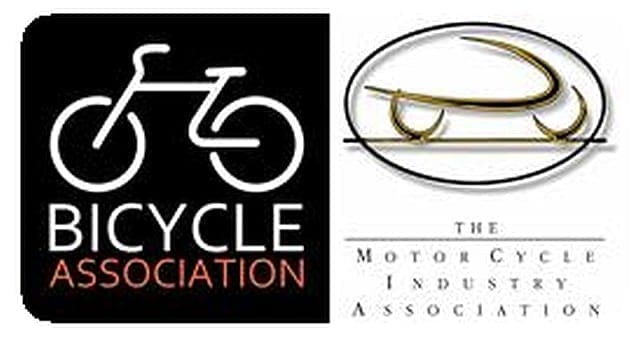The Motorcycle Industry Association (MCIA) and the Bicycle Association of Great Britain (BA) are concerned that some sellers are unaware of, or ignoring, the rules surrounding high powered electric bicycles.
Both associations are fielding enquiries regarding the exploitation of a ‘grey area’, whereby high powered bikes are bought for ‘off-road use’, in the mistaken belief that this makes them exempt from existing rules.
In order for an electric bike to enjoy the same rights as an ordinary pedal cycle, it should have working pedals, not exceed 250 Watts and the electrical assistance should cut out when the bike reaches 15.5mph. In the UK, an electric bike over 250W is legally classified as a moped if it is to be ridden on the road. Mopeds must be ‘type approved’, registered, taxed, insured and have an MOT. The rider must have the appropriate licence/training and wear a helmet.
If an electric bike over 250W is intended for off-road use in the UK, then it must comply with the same rules which apply to off-road motorcycles. That means riders are barred from using public roads, common land, paths or tracks intended for cyclists and must be registered on an agreed list for off-road competition bikes, known as the FIM competition list, or be EC Type Examined.
Enjoy everything More Bikes by reading monthly newspaper, Read FREE Online.
MCIA and BA would also remind anyone who owns or is selling an e-bike that it makes no difference if the machine has a switch to flick between a higher and lower power setting. The higher power rating is the rating that the bike needs to be classified by.
For an e-bike to be treated legally as a bicycle in the UK it must be 250W or less, must have pedals and the power assistance must cut out at 15.5mph. Anything else is treated in law as a moped.
Speed pedelecs are currently treated in UK law as mopeds, with no exemptions from moped requirements.
Anything over 250W and intended for off-road use is classified as a motocross machine, must be EC Type Examined, or on the FIM competition list and can only go where regular motocross bikes are legally permitted to go.
ELECTRIC MOPEDS
When intended for road use, an electric bicycle or speed pedelec over 250W and not over 4kW is classified as a moped (L1e-A or L1e-B). Speed pedelecs fall into the L1e-B category. That means any such vehicles must meet all the requirements that a moped and moped rider need to comply with:
Be 16 years of age or over
Have a moped entitlement on car license or a valid CBT
Wear a helmet
Fix ‘L’ plates if appropriate
The rider needs insurance, road tax and an MOT
E-bikes over 4kW intended for road use are motorcycles and must comply with the rules which apply to motorcycles of a similar output.
TYPE APPROVAL
Machines over 250W intended for on road use need to be ‘type approved’ and registered for the road. It doesn’t matter how briefly a rider will be on the public road, an e-bike over 250W is a moped and needs to be registered as such.
Type approval is now also required for the sale of new e-bikes with a “Twist and Go” throttle (i.e. the motor can operate up to 15.5mph without the rider pedalling) but which are otherwise below the 250W rated power and 15.5mph assist speed limits. Like other e-bikes in use, these machines are still treated in UK law as bicycles, except that the rider must be 14 or over.
The most recent guidance notes from the Department for Transport on electric bikes are available at: http://tinyurl.com/zxvka5p
WEBSITES:
www.mcia.co.uk
www.bicycleassociation.org.uk
Advert
Enjoy everything More Bikes by reading the MoreBikes monthly newspaper. Click here to subscribe, or Read FREE Online.



